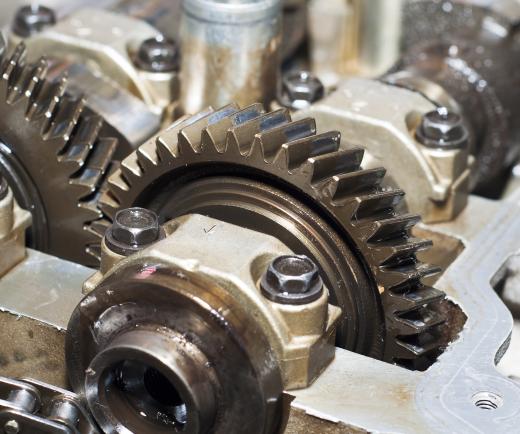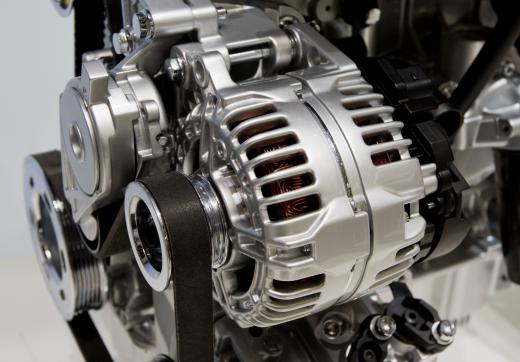A gear reducer is a mechanism by which the energy output of a high-speed motor or engine is redirected to turn another mechanical component at a lower rotational speed and at a higher torque. Gear reducers are devices that can take several forms. They are also referred to as gear boxes or gear shifters and are simple transmissions. Gear reducers also offer mechanical safety by reducing the speed of rotating equipment. In its most simple form, gear reduction takes place in set ratios that are related to a characteristic value of the input and output gear components.
The automobile presents a common example of gear reduction. Internal combustion engines must operate at high speeds to maintain smooth power generation. When the vehicle is stopped, slowing or traveling slowly, the speed of the engine, if directly applied to the wheels, would cause the wheels to spin or the car to gain speed or even cause the loss of steering control. By the use of a gear reducer, the energy can be used to overcome the inertia of the stopped vehicle, decrease the momentum of a slowing vehicle or allow heavier loads to be towed but at a lower velocity.

A gear reducer accomplishes the energy transformation by changing the ratio of the rotation of two moving parts. In a watch, gears of different sizes directly contact each other in fixed ratios to change the rate of motion between the central rotating shaft and the various clock hands. In a bicycle, a lever pushes a chain between sprockets of different sizes. In a windlass or a winch, a belt switches between pulleys of different diameters to control the speed at which a load is lifted as it gains momentum. Gear ratios are calculated from the ratios of either the number of teeth in each gear, the diameter of the sprockets or the diameter of the pulleys.

A more advanced gear reducer can be obtained by allowing one or both of the mechanical dimensions to vary without actually changing gears. Instead of a cylinder as a pulley if a conical shape is used, the belt can travel up or down the cone, changing the diameter and thus the gear ratio continuously as it moves. This type of gear control is called a continuously variable transmission (CVT). Smaller, less expensive vehicles, such as go-karts, or vehicles requiring only a small range of speeds, such as farm tractors, can take advantage of the simplicity of a CVT.

In an infinitely variable transmission (IVT), a CVT is combined with an epicyclic gear system. This system, also known as a planetary gear system, includes a central gear, which is called the sun, that meshes with two or more gears that rotate around it, which are called the planets. The planet gears in turn mesh with the inward-facing teeth of a large gear ring called the annulus.

Either the sun or the annulus is held fixed. The input and output shafts can be any of the three positions. A pencil sharpener is a beveled planetary gear reducer. In heavy construction equipment, planetary gear systems are used to provide the high torque necessary to move these machines.
